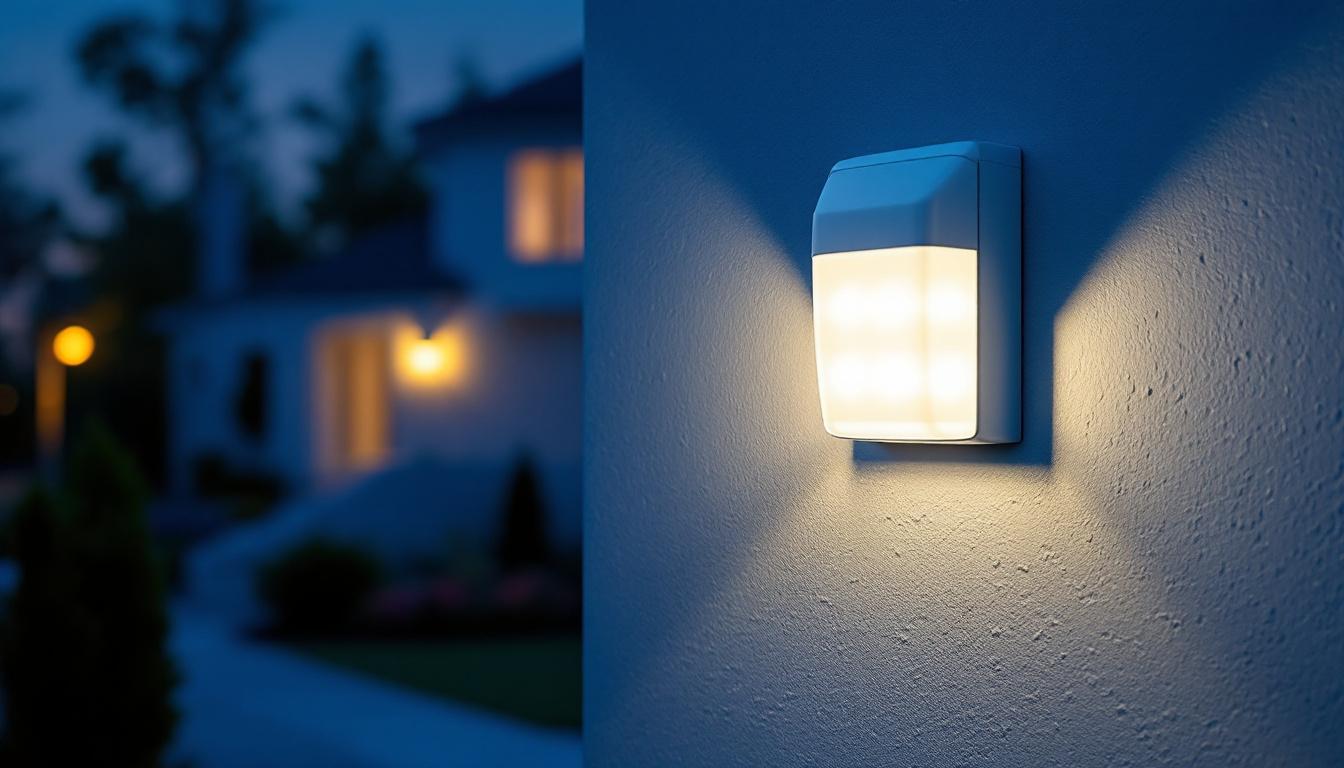
In the realm of lighting installations, the significance of a well-designed lamp hallway cannot be overstated. This often-overlooked area serves as a crucial transition space, guiding occupants from one room to another while setting the overall ambiance of a home or commercial space. Understanding the role of lamp hallways in lighting design is essential for lighting contractors aiming to create functional and aesthetically pleasing environments.
Hallways are more than mere passageways; they are the connective tissue of a building. Proper lighting in these areas enhances safety, improves visibility, and contributes to the overall design narrative of a space.
One of the primary functions of hallway lighting is to ensure safety. Dimly lit corridors can lead to accidents, especially in residential settings where children and elderly individuals may be present. Bright, well-placed lighting fixtures illuminate potential hazards, such as stairs or uneven flooring, making navigation easier and safer.
In commercial settings, effective hallway lighting is equally critical. It not only helps in guiding employees and visitors but also minimizes the risk of workplace injuries. A well-lit environment fosters a sense of security, encouraging people to move freely without fear of tripping or stumbling. Furthermore, incorporating motion sensor lighting can enhance safety by automatically illuminating dark areas when someone approaches, ensuring that no one is left in the shadows.
Lighting plays a pivotal role in setting the mood of a space. In hallways, the right lighting can create a warm and inviting atmosphere. Soft, warm lights can make a home feel cozy, while sleek, modern fixtures can lend a contemporary touch to commercial spaces. By carefully selecting the type of lighting, contractors can influence how occupants feel as they move through these transitional areas.
Moreover, hallway lighting can be used to highlight architectural features, artwork, or decorative elements, adding character and depth to the overall design. This thoughtful approach transforms a simple corridor into an engaging experience. For instance, using recessed lighting to accentuate a gallery wall can draw attention to framed photographs or paintings, making the hallway not just a passage but a mini-exhibition space. Additionally, varying the intensity of lighting along the hallway can create visual interest and guide the flow of movement, subtly directing people toward key areas, such as exits or gathering spaces.
When it comes to illuminating hallways, various types of lighting can be employed, each serving a unique purpose. Understanding these options allows contractors to tailor their designs to meet specific needs and preferences.
Ambient lighting provides the general illumination necessary for a space. In hallways, this is often achieved through ceiling-mounted fixtures, wall sconces, or recessed lighting. The goal is to create a uniform light level that ensures visibility without being harsh or overwhelming.
Contractors should consider the height and width of the hallway when selecting ambient lighting. A narrow corridor may benefit from wall-mounted fixtures that direct light downward, while wider spaces may require overhead fixtures to distribute light evenly. Additionally, the color temperature of the bulbs used can significantly affect the ambiance; warmer tones create a welcoming atmosphere, while cooler tones can lend a more modern and crisp feel.
Task lighting is designed to illuminate specific areas where activities take place. In hallways, this could include lighting near doorways, staircases, or areas where individuals may need to read or find objects. Adjustable fixtures or strategically placed sconces can enhance functionality in these critical zones.
For example, installing a focused light above a reading nook at the end of a hallway can create a cozy space for relaxation while ensuring that the area remains well-lit for safety. Moreover, incorporating motion-sensor lights can be particularly beneficial in hallways, as they provide illumination only when needed, enhancing energy efficiency while ensuring that occupants can navigate safely during nighttime hours.
Accent lighting serves to highlight particular features or elements within a hallway. This could include artwork, architectural details, or decorative moldings. By using spotlights or track lighting, contractors can draw attention to these focal points, adding visual interest and depth to the corridor.
Accent lighting not only enhances the aesthetic appeal of a hallway but also allows for personalization. Homeowners may choose to display family photos or artwork, while commercial spaces can showcase branding elements or unique design features. Furthermore, the use of colored LED lights can introduce an element of creativity, allowing for dynamic displays that can change according to seasons or events, thus keeping the hallway vibrant and engaging throughout the year.
The selection of lighting fixtures is a critical aspect of hallway design. The right fixtures not only contribute to the overall aesthetic but also enhance functionality and efficiency.
In today’s environmentally conscious world, energy efficiency is a top priority for many lighting contractors. LED fixtures have gained popularity due to their longevity and low energy consumption. By opting for LED lighting in hallways, contractors can provide clients with a sustainable solution that reduces energy costs while maintaining high-quality illumination.
Additionally, incorporating smart lighting technology can further enhance energy efficiency. Motion sensors and dimmers can ensure lights are only on when needed, reducing waste and extending the lifespan of the fixtures. This technology not only promotes sustainability but also offers convenience, allowing homeowners to customize their lighting experience based on their daily routines. For instance, hallway lights can be programmed to brighten as someone approaches, creating a welcoming atmosphere while conserving energy during off-peak hours.
Choosing fixtures that complement the overall design theme of a space is essential. A modern hallway may benefit from sleek, minimalist fixtures, while a traditional setting might call for ornate chandeliers or sconces. Understanding the design language of the space allows contractors to select fixtures that seamlessly blend with the existing decor.
Furthermore, it is crucial to consider the scale of the fixtures in relation to the hallway dimensions. Oversized fixtures in a narrow corridor can overwhelm the space, while small fixtures in a large hallway may go unnoticed. Striking the right balance is key to achieving a harmonious design. Additionally, the materials used in the fixtures can significantly influence the overall aesthetic. For example, brushed nickel or matte black finishes can add a contemporary touch, while antique brass or wrought iron can evoke a sense of timeless elegance. The interplay of materials, colors, and textures can create a visually engaging environment that draws the eye and enhances the experience of moving through the space.
Incorporating advanced lighting controls can significantly enhance the functionality of hallway lighting. Automation allows for greater flexibility and convenience, catering to the dynamic needs of occupants.
Smart lighting systems enable users to control their hallway lights remotely or set them to operate on a schedule. This technology can be particularly beneficial in commercial settings, where lights can be programmed to turn on and off based on occupancy or time of day.
For residential spaces, smart lighting can enhance convenience by allowing homeowners to adjust the brightness or color temperature of hallway lights through a mobile app or voice commands. This level of control not only improves the user experience but also contributes to energy savings.
Dimmer switches are a simple yet effective way to enhance the versatility of hallway lighting. By allowing occupants to adjust the brightness according to their needs, dimmers can create different moods and atmospheres. For instance, bright lighting may be preferred during the day for visibility, while softer lighting can create a calming ambiance in the evening.
In addition to enhancing comfort, dimmer switches can also extend the life of light bulbs by reducing the amount of energy consumed. This makes them a practical choice for both residential and commercial installations.
Regular maintenance is essential to ensure that hallway lighting remains effective and visually appealing. Contractors should educate clients on the importance of upkeep and provide guidance on best practices.
Dust and grime can accumulate on light fixtures, diminishing their effectiveness over time. Regular cleaning not only enhances the appearance of the fixtures but also ensures optimal performance. Contractors should recommend a cleaning schedule that includes dusting fixtures and replacing bulbs as needed.
When it comes to bulb replacement, it is important to choose the right type and wattage to maintain consistent lighting levels. Providing clients with a list of compatible bulbs for their fixtures can simplify this process and ensure long-lasting illumination.
As technology advances, lighting fixtures may become outdated or less efficient. Contractors should stay informed about new products and innovations in the lighting industry, offering clients the option to upgrade their fixtures for improved performance and energy efficiency.
Encouraging clients to consider upgrades when renovating or redecorating can lead to enhanced functionality and aesthetics in their hallways, ultimately adding value to their property.
The lamp hallway is a critical component of lighting installations that should not be overlooked. By understanding the importance of hallway lighting, the various types of lighting available, and the significance of fixture selection and maintenance, lighting contractors can create spaces that are not only functional but also inviting and visually appealing.
As the demand for innovative lighting solutions continues to grow, contractors who prioritize the design and implementation of effective hallway lighting will be well-positioned to meet the needs of their clients. Ultimately, investing time and effort into the lamp hallway can lead to enhanced safety, improved aesthetics, and increased satisfaction for all occupants.
Ready to elevate your lighting installations with the critical components discussed in this article? At LumenWholesale, we provide lighting contractors with the highest quality, spec-grade lighting products at the most competitive wholesale prices. Say goodbye to local distributor markups and hello to a vast selection of reliable, high-performance lighting that meets the strictest industry standards. With the added benefits of free shipping and bulk buying convenience, LumenWholesale is your go-to source for premium lighting without the premium price tag. Don’t compromise on quality or value—explore our wholesale lighting options today and bring superior illumination to every corridor and hallway.

Discover essential tips and expert advice from leading lighting contractors on choosing and installing weatherproof electrical boxes.

Explore the pros and cons of outdoor light junction boxes versus alternative solutions in this comprehensive guide.

Discover effective strategies to train your team in LED tube lighting, enhancing efficiency and sustainability in your projects.

Discover the essential insights into LED light pucks that every lighting contractor needs to know.